After a wait of 20 days, Opera Mini has been approved by Apple for release to the App Store.
Opera Mini Approved On The App Store
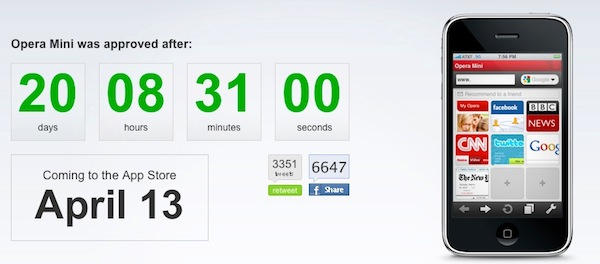

After a wait of 20 days, Opera Mini has been approved by Apple for release to the App Store.
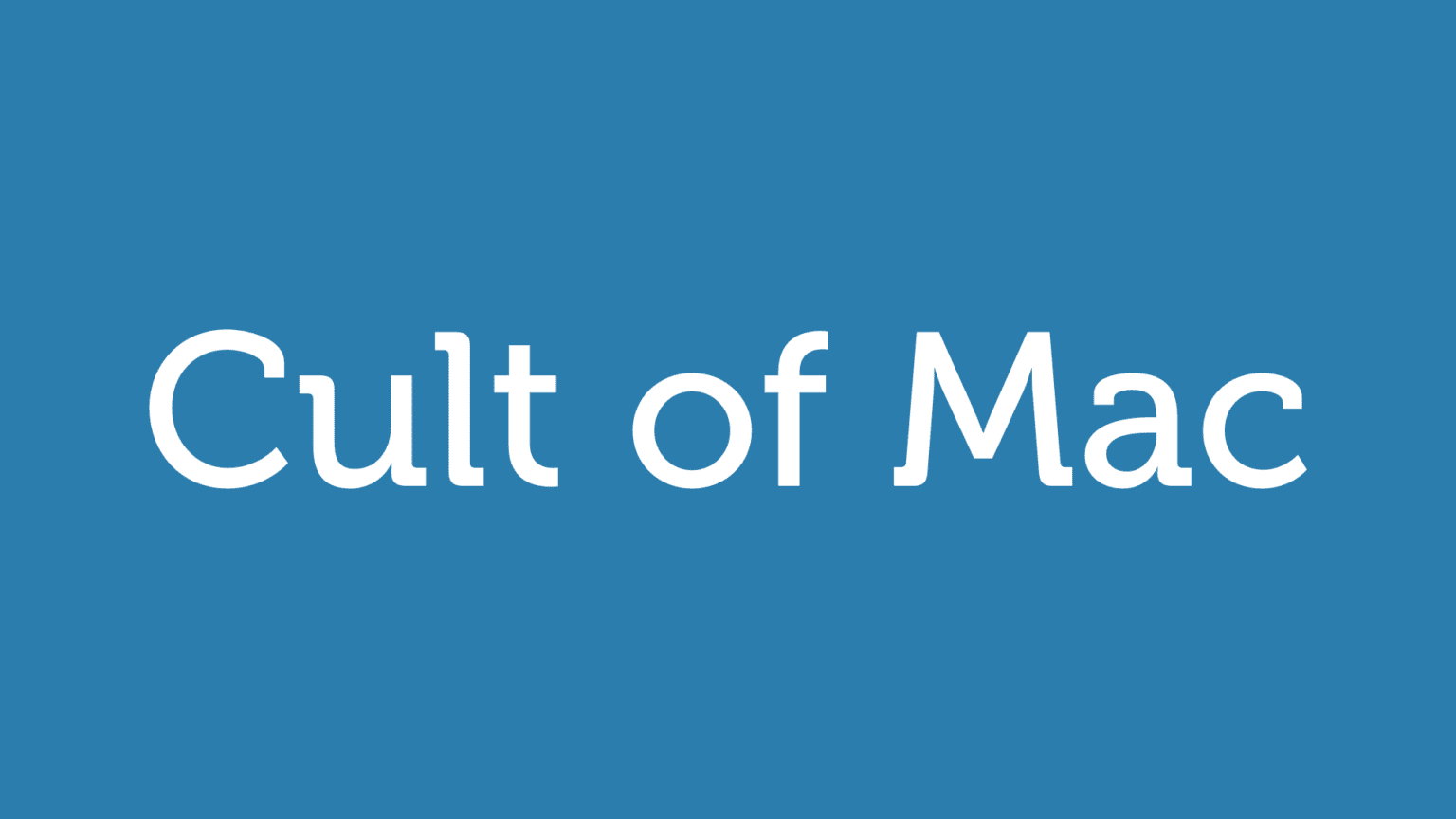
There are quite a few similar services around, but Cloud is the latest of the instant file sharing apps, and it’s very nicely done.
The aim is to make sharing of files – any files – as quick and painless as possible. Whatever you wish you share, you drag up to the icon in your Menu Bar. The app does everything from there; uploading the file, creating a short URL for it, and putting that URL on your clipboard. All you need to do is paste it somewhere.
Cloud is still very young. It was only officially out of beta on April 1st, and there are still some rough edges. What I like about it is that the dev team are very open about what’s going on, as you can see from posts like this one on their blog.

Exposé is a system built into Mac OS X, designed to help you find your way around windows and applications more easily.
When you have a lot of different windows cluttering up your screen, it can be hard to locate the exact one you want. Exposé makes it easier by momentarily displaying all of them, shrunk down a little so that they will all fit into view.

Hands up if AT&T drives you insane. The iPhone can do a lot of great things, but some people find that actually making calls is not one of its standout features.
Here’s a video of quick iPhone gags, some of them at AT&T’s expense. Stick with it, the final use for the iPhone is one that I think a few people might even have seriously considered, if not actually done.
Wait a second, the Dog Trainer app is a real thing isn’t it? Why yes. Yes it is.

We’ve already explained how the Dock is split into two halves, and looked at the applications side of it in the last screencast.
This time, we’re looking at more ways to customize the Dock, and make it bend to your will.

The iPad, as we all know, does not have a camera. But one developer has come up with an ingenious way of getting round that minor inconvenience, and turning the iPad into a photography device.
All you need to make it work is an iPhone.
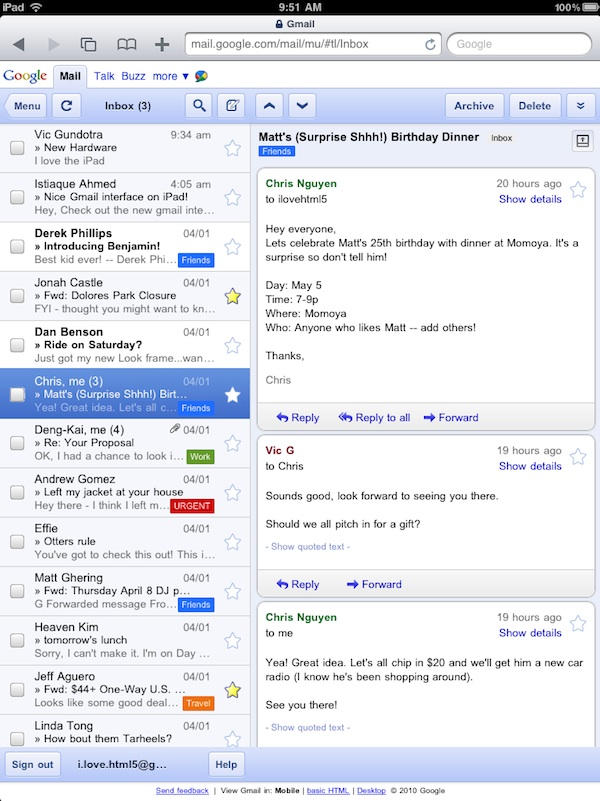
Not wishing to get left behind amid all the iPad fussing, Google has announced an experimental web UI for iPad and other tablet devices.
Taking cues from Apple’s own Mail for iPad, the webapp puts an inbox down the left side and displays messages on the right.
In the same post, Google’s Punit Soni reminds us that no matter how bad the Apple-Google relationship has been painted by the press, things are obviously going well enough for a number of Google products to be included by default on iPads out-of-the-box, namely: Google search inside Safari, YouTube, and Maps.
That doesn’t sound like two companies at war to me.

Back in December, we reported on the Mag+ prototype for an electronic magazine, developed by the R&D team at Bonnier with help from London design team BERG.
Today, Mag+ becomes reality with the release of Popular Science+, a version of the, um, popular science magazine that’s been built exclusively for iPad. And it looks amazing.
Here’s a video walk-through from BERG’s Jack Schulze:
Compare and contrast with the original video mockup from a few months ago:
The BERG team have done a great job of turning their concept into a real product. They’ve done something else, though: Mag+ is a template, a platform for e-magazine publishing. Having got this trial version of Popular Science out, Bonnier can apply the same technology to their other titles, as well as move it to other mobile platforms like Android.
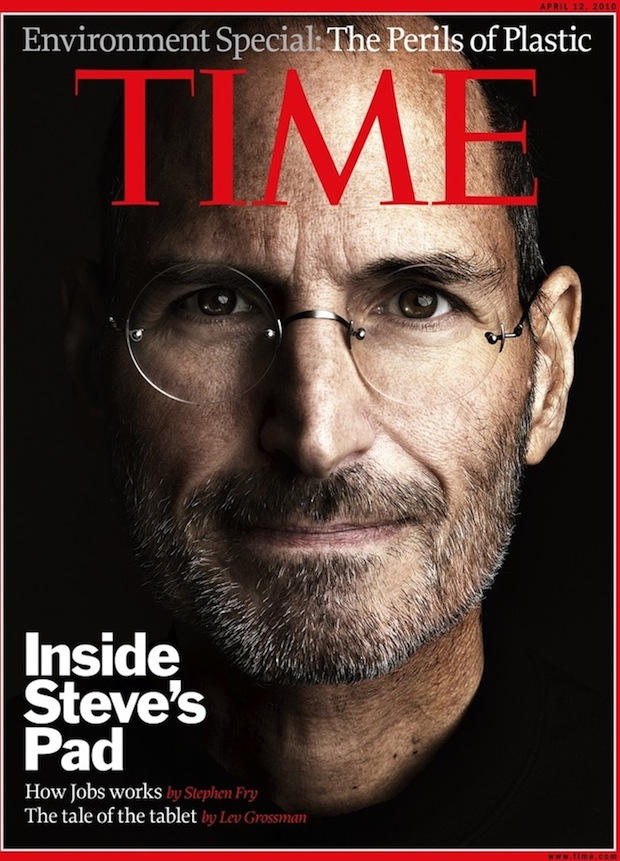
 As the iPad emerges, blinking, into the sunshine after its months of sequestration at 1 Infinite Loop, so the media machine grinds into action. We’ve seen dozens of iPad reviews published over the last 24 hours; now Time scoops them all with Stephen Fry interviewing Steve Jobs.
As the iPad emerges, blinking, into the sunshine after its months of sequestration at 1 Infinite Loop, so the media machine grinds into action. We’ve seen dozens of iPad reviews published over the last 24 hours; now Time scoops them all with Stephen Fry interviewing Steve Jobs.
For those who don’t know, Stephen Fry is well qualified to do this. He’s been using Macs since the early days, and he’s a genuine geek. He just loves gadgets.
And of course, being a world-famous actor and writer, he’s pretty well connected. His people, it seems, know Jobs’ people, and arranged for the two to meet.
Fry doesn’t reveal much from his meeting with Jobs (everything from that encounter is on the final page of the four-page article).
He does have the nerve to ask Jobs if this is “the curtain dropping on your third act”, to which Jobs replies:
“I don’t think of my life as a career. I do stuff. I respond to stuff. That’s not a career — it’s a life!”
Something we should all consider before we think about making any more unboxing videos…

From Think Geek comes the one April Fools joke that I really wish was real: the iCade. Bringing all your 1970s and 80s gaming memories back to life. In theory anyway.
Seen any other good April 1st gags while browsing around this morning?
I didn’t see too many, I was too busy transferring all my files over to my new Windows 7 machine. It’s incredible!

Sachin Agarwal is one of the founders of hip email blogging service Posterous – but he used to work for Apple, and like a lot of us, he has opinions about OS X.
His latest is something that sparks a certain amount of controversy, because he’s predicting the imminent death of the Finder.
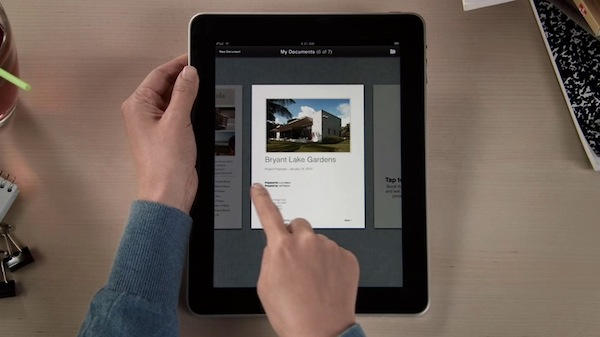
The iPad Guided Tours that Apple published yesterday are a great way of getting a better idea of what it will actually be like to use an iPad.
But they also show us how Apple’s own “My Documents” feature – first spotted by us back in February – will work.

Keen computer collector Melissa Maloney has a lot of iPods. A LOT of iPods. And quite a few computers too, including an ancient Canon Cat.
I saw her stuff and wanted to ask her: Why do you have so many iPods? What’s the appeal of these old computers? So I did. And here’s what she said.
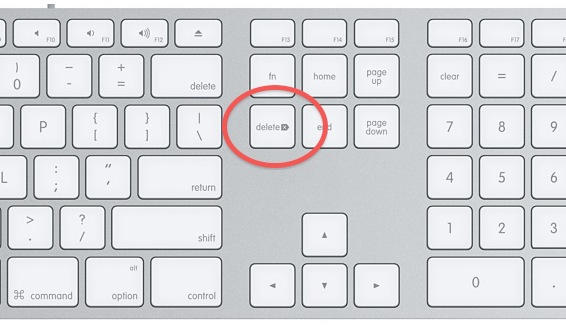
Windows PCs have two distinct keys for deleting text in different directions – delete and backspace. But on some Macs, there’s no sign of anything called “delete”. What gives?
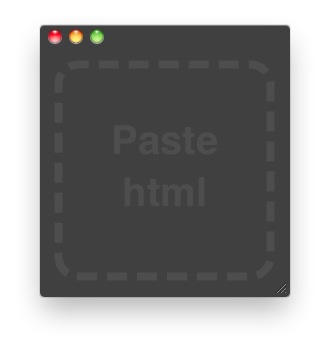
So you’re browsing around and doing your stuff, and you see some video on a web page that you want to watch.
Most of us will just watch it in situ, but what if it’s something special? What if it deserves to be displayed with a little more respect for the medium?
Enter Extract from Zach Waugh in Baltimore.
It’s a tiny utility that displays web videos in a minimal, chrome-less window of their own, very similar to the way QuickTime Player does its job in Snow Leopard.
Using Extract is as simple as pasting in the embed code for the video clip you want to watch.
Introducing Extract, Zach says: “Extract will also modify the embed code so that the video will expand as you resize the window. Then you can have it as large or as small as you want it.”
Here’s a quick demo video (which of course, you could always watch in Extract if you’ve already gone and grabbed it):
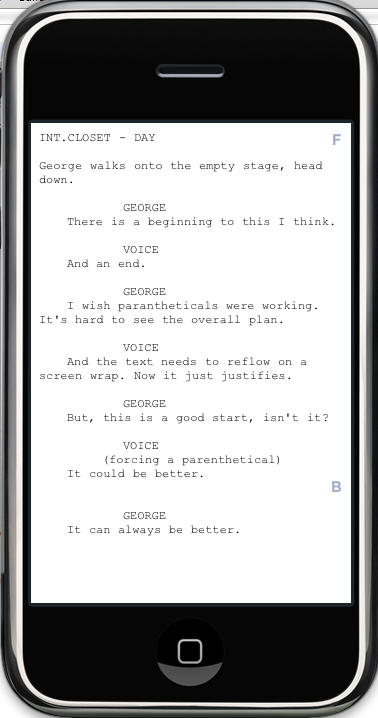
Auteurist is an all-purpose multitool for writers with iPhones, boasting an impressive array of features and different writing modes.
Its developer has been keeping users up to date with progress at the Auteurist Posterous, and in the latest post looks in detail at the challenges of creating a decent scriptwriting mode.
One interesting approach is to make the script on the iPhone screen look right, even though it doesn’t actually follow any rigid formatting rules. It looks as it should, and that’s sufficient on the iPhone screen; yet when you choose to export the finished script to a desktop computer, Auteurist will do the proper formatting on-the-fly, ensuring the final output meets the standards that people who read scripts will expect.
It’s still a work in progress, but it’s interesting to see the progress as it happens. And as the developer notes, things will get much more interesting when a future version of the app is ready for iPad.
Part of me wants to run a mile away from writing apps on the iPhone, simply because I can’t imagine wanting to write anything of any length on it. But another part of me knows the feeling of being struck by sudden inspiration, and having nothing but an iPhone with me to start writing on.
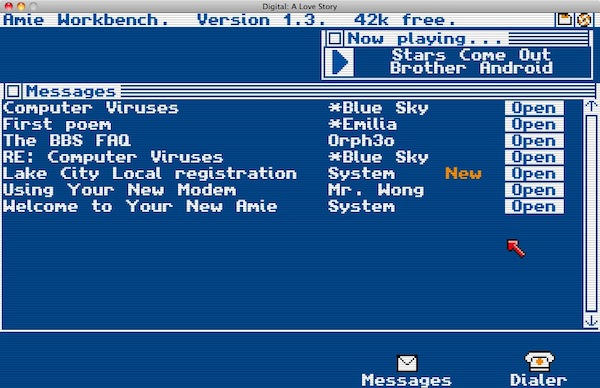
Digital is… well, what is it exactly?
Officially, it’s “a computer mystery/romance set five minutes into the future of 1988”. It’s available for Windows, Linux and Mac, and it’s a joy for old-timers like me to behold.
What you see when you start Digital is how computers used to be. Back in the days when Cult of Mac would have been a roughly-stapled fanzine sold for 50 cents a copy (please send a stamped addressed envelope).
But it’s more than a nostalgia trip. It’s something else. Built by Ontario-based author Christine Love, Digital promises much more than just nostalgia. You might even get to save the world by exploiting a buffer overflow. That’s how old-school nerd superheroes used to do things.

The Dock is a weird beast. Even long-term Mac users will tell you that. Quite a lot of them don’t even like it, because it’s a bit of a mish-mash. It’s a launcher, but it’s also a switcher. It can be used for storing shortcuts to files and folders, and it can be used to store minimised windows. Sometimes it flashes up status messages from applications, too.
It can get a little busy.
So then. The Dock you get when you first start up your Mac will look broadly similar to this:

Each icon represents an application. If you want to use a particular application, you click on its icon.
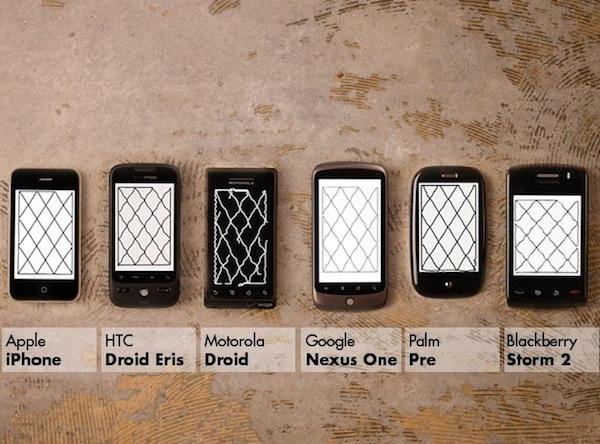
Not content with their DIY touchscreen analysis experiment back in January, the team at Moto Labs have gone one better, and repeated the test with more handheld devices and a fairer test environment.
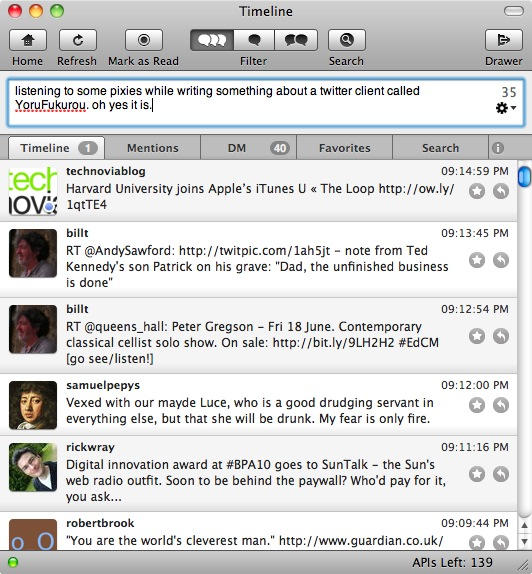
This is YoruFukurou, a Twitter client from Japan, built by @seabream and @aki_null.
It’s a native app for 10.5.8 or 10.6, and packs a lot of features into a nicely self-contained and fairly minimal little package.
One of those features is tabs: you can add Twitter-wide searches or personal filters to the line of filters that appears just below the text entry box.
YoruFukurou (it means “Night Owl”) supports link shortening, TwitPic pictures, current iTunes song, and loads more. It counts your tweet’s characters, it has a variety of appearance modes and adjustable colors, and a decent set of keyboard shortcuts. In short: it’s neat. It really does cater to pretty much all your Twittering needs – well, certainly all of mine, but then I’m not a terribly demanding Twitter user. (Sorry, can’t bring myself to say “Tweeter”. Euw.)
Best of all, it’s free. Go get it.

You know the situation: you quit an app or close a document, and out slides a dialog (known as a “sheet” in OS X) asking you to Save / Don’t Save / Cancel.
On Windows, you can move through these buttons with the Tab key or the Arrow keys. But by default on OS X, that doesn’t work. Even some Mac users find this annoying, myself included.
There are two workarounds. The first is to learn some simple shortcuts.
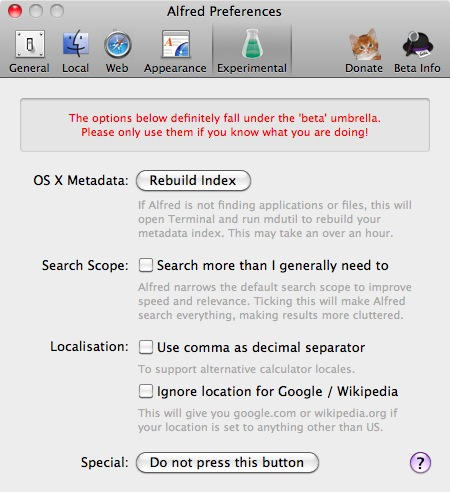
Keyboard launcher app Alfred has been coming along nicely since we last covered it.
The latest release takes it to 0.5 and adds a bunch of good stuff, including a built-in basic calculator, support for Google’s “I’m Feeling Lucky” and Wolfram Alpha, and the ability to change keywords for specific web search commands. So, the default command to search Twitter is “twitter”, but you can now edit that to “ts” if you like.
Also hidden away in the newly enlarged preferences panel is this “Special” item. It says: “Do not press this button”

Got that? Don’t press it.

Just don’t.

Pressing the button is a bad idea. That’s why they tell you not to press it.

Under no circumstances should you download this software and press this button. None whatsoever. Got that?

Good.

Here in the UK, politics is in a strange limbo and will be for the next few weeks. The sitting Labour government has to call a General Election very soon (most bets are on April 6th for Prime Minister Gordon Brown to visit the Queen to ask her permission).
As a result, not much is happening. The political parties are making frantic behind-the-scenes preparations for the election, while the politicians are going through the motions, waiting for the official election announcement to be made.
All of which makes this morning’s speech by Prime Minister Gordon Brown, in which he announced a new official 10 Downing Street iPhone app, all the more surreal.
Brown is not well known for any love of technology (although I think he’s slightly more tech-savvy than his hopelessly Luddite predecessor Tony Blair, who openly admitted his complete ignorance of all things technical). But what annoys me more than anything else is that Brown should waffle on about Britain’s digital future on one hand, while his Government desperately tries to push the disastrously flawed Digital Economy Bill through Parliament with the bare minimum of debate.
That Bill, if passed, will allow household internet connections to be cut off permanently on the say-so of vaguely-defined “copyright holders”. The music and film industries are strongly in favour; pretty much everyone else, including the ISPs, is very strongly against. It’s a case of lobbying overtaking common sense.
If you live in the UK and, like me, you think this rush to push through a bad law is a bad thing, you should do something about it – soon.

Tech site H-Online has an interesting story today, quoting security expert Charlie Miller about his forthcoming talk at the CanSecWest conference next week.
He says OS X is full of security holes. There are lots more than in Windows, he claims.
And yet: OS X is a safer system to use. Why? Because, in the words of The Inquirer, its users are “so far from the action.”
H-Online quotes Miller saying:
“Mac OS X is like living in a farmhouse in the country with no locks, and Windows is living in a house with bars on the windows in the bad part of town.”
At the conference next week, Miller will reveal how he found the holes – but won’t tell anyone exactly what they are.
Hmm. So this place we’re in right now: this is just a rural idyll? Is Miller right with his summary of the state of OS X security, or is he trying to drum up a little additional buzz about his security consulting business?
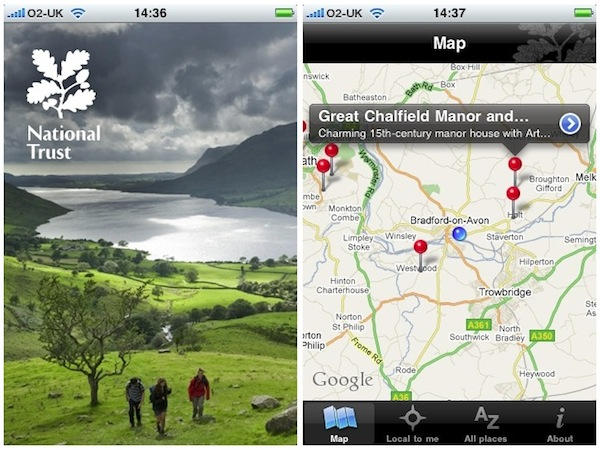
The National Trust is one of the UK’s national treasures – a charity that looks after all manner of old and ancient pieces of British heritage.
That means owning and maintaining miles of coastline, acres of woodlands, heaths, mountains and gardens, and quite a few stately homes.
The Trust is much loved, but it has something of a stuffy reputation. The stately homes are usually preserved as they would have been in times past – which means you’re allowed to walk through and take pictures, but not touch.
Not anymore. A new policy of opening up means the Trust is allowing people to touch historic objects for the first time.
It’s also a good time to launch a National Trust iPhone app. The free app includes locations, maps, opening times and visitor information for all National Trust properties in England, Wales and Northern Ireland.
I particularly like the “Near to me” feature. Obvious to include, of course, but might come in really useful next time I’m exploring an unfamiliar part of the country with the family in tow.